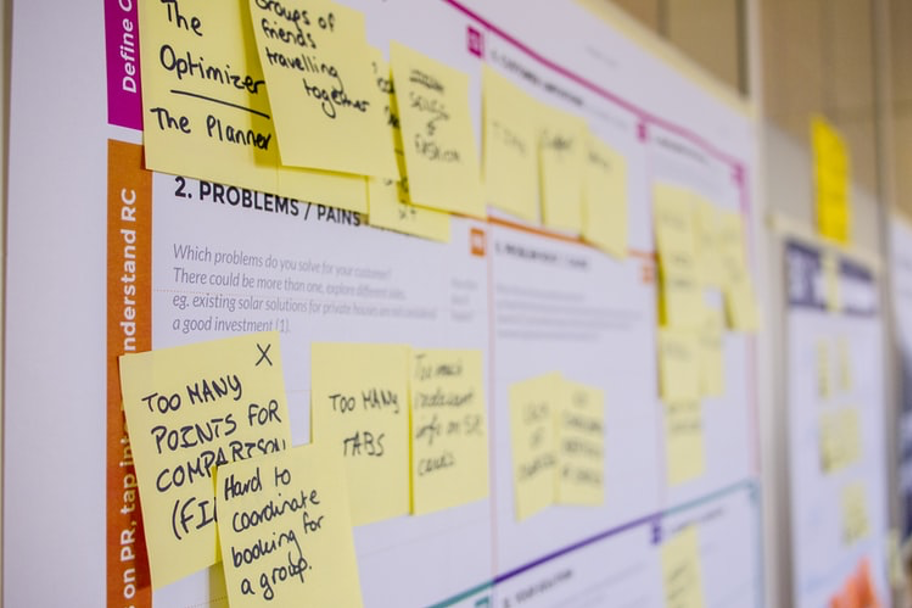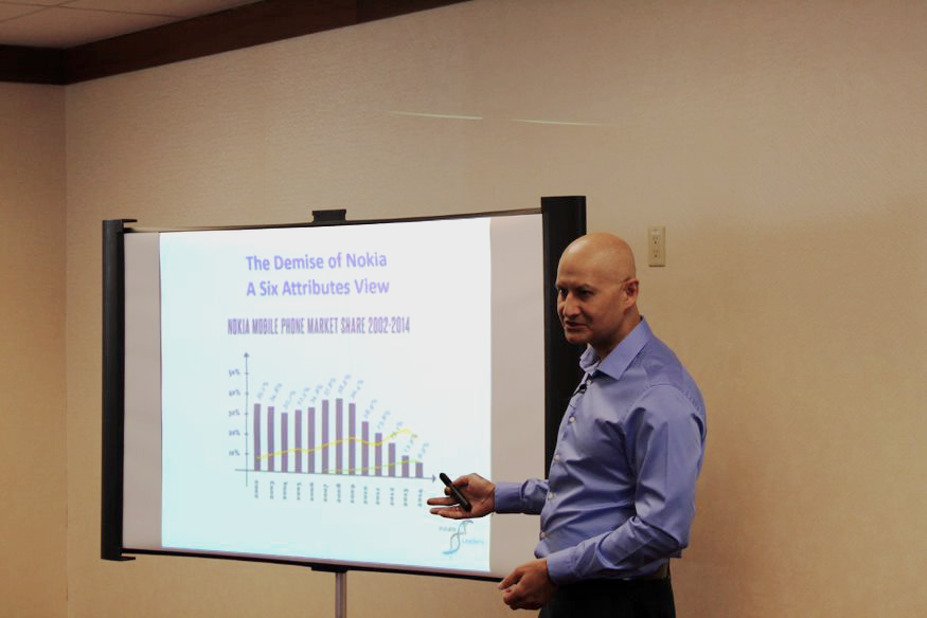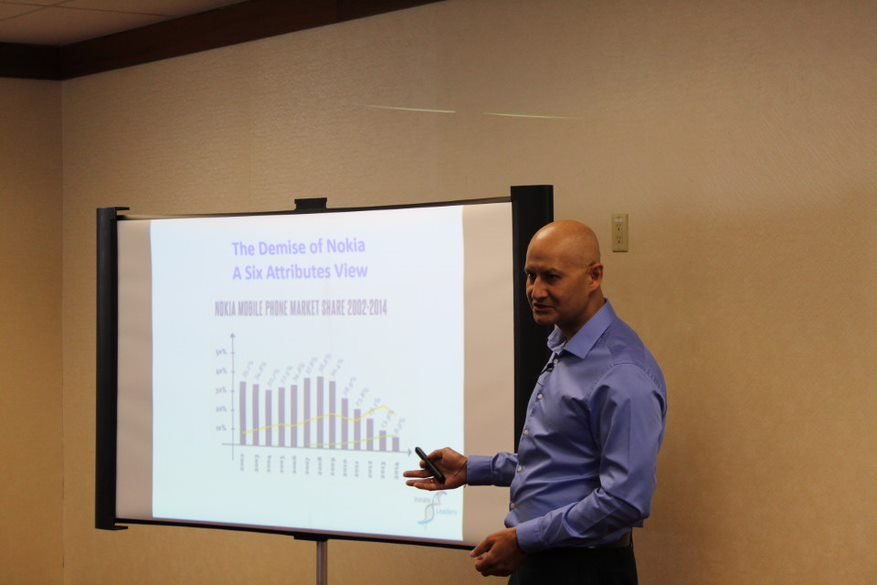PODCAST: The Key to Making Change Management Stick

A fourth and final Outback Talks interview with Joe Britto on the topic of Change Management Consulting. Listen in to learn more about his secret to effectively managing change within any business.
Joe Britto, a psychological coach, published author, founder of Innate Leaders, and Outback’s business management consultant, joined our team for a final interview to discuss his solution Change Management Consulting.
You can listen to the full episode below, or continue reading to learn more.
During the interview, Joe took us through:
- How Innate Leaders’ Management Consulting Works: Outlining the two stages of a change management solution with Innate Leaders, Joe describes what it’s like for corporate groups to work with his team.
- The 6 Attributes of a Leadership Mindset: Joe touches on the six attributes of a leadership mindset and discusses how they relate to Change Management Consulting.
- Change Management Consulting: Joe explains the specifics of this solution, identifying the corporate groups that tend to benefit most.
- How This Solution Is Different: In the episode, Joe also walks us through how Change Management Consulting differs from more traditional business management consulting.
“The big shift, really, is in the leadership team to move from a consulting mindset to an involving mindset,” says Joe.
How Innate Leaders’ Management Consulting Works
Regardless of which solution your group has chosen to help support your team’s growth, business management consulting with Innate Leaders always follows the same two-step process, framed around the six attributes in growing a leadership mindset.
“It’s a two-step approach. That’s our model,” says Joe. “We shift mindsets, and then we apply that mindset to the challenge, team, or, in this case, the change the business is working towards.”
Although each consultation follows one format, it isn’t to say that all of them are the same. Far from it. In fact, every solution is built bespoke from the ground up to address the unique challenges of the groups that Joe and his team work with.
For example, not every management consultation will apply all six attributes. Instead, the team will evaluate which of the six are most impactful to a specific challenge and focus on those.
Viewed through the lens of these attributes, Joe guides corporate groups in changing their perspectives.
The 6 Attributes and Change Management Consulting

So, what are the six attributes of business management consulting? According to Joe, “There’s this thing called leadership mindset that we feel is comprised of six attributes, possibly more, but these are the six that we think are worth focusing on.” They are:
As mentioned, not every group will focus on shifting their mindset in terms of all six of the attributes. For Change Management Consulting, Joe says most solutions will revolve around three: resilience, creating leaders, and enterprise thinking.
Find more information on each attribute below.
1. Mindfulness
“Mindfulness is really about having the ability to be present in a moment to see what is going on under the surface of a situation,” says Joe. He continues, “To not react to a situation but to wait, to see, to understand the dimensions of the challenge, and then to make a decision based on that.”
2. Genuine Curiosity
“Genuine curiosity is asking sometimes very obvious, very simple, but also very profound questions about why we do things the way we do,” explains Joe. He suggests that the difference between curiosity and genuine curiosity is asking questions in the spirit of wanting to know, without having a predetermined end goal in mind.
3. Flexibility of Mind
“Flexibility of mind has this kind of quality. It’s the only attribute that actually runs in a process. So, it’s a three-step process, you might say,” describes Joe. The first step is recognizing that you could be wrong. The second part is to understand that there are multiple valid solutions to any problem. And then the third step is to creatively combine these solutions into a revolutionary idea.
4. Resilience
“Resilience is really all about keeping keeping on,” suggests Joe. He explains that when it’s really difficult to get something done, resilience is the guiding light that allows us to live through it, keep our eyes on the prize, and get back up after we’ve been knocked down.
5. Creating Leaders
“Creating leaders is about creating leaders of others, but I just call it creating leaders,” says Joe. He explains that this attribute focuses on how to grow leaders and help people think for themselves in order to create a leadership pipeline within a business.
6. Enterprise Thinking
Joe explains that enterprise thinking is about doing what makes the most sense for the business because you understand that by doing so, you’re also benefitting yourself. “When it works at its best,” says Joe, “We are working together to do what is best for our business areas and what is best for the enterprise as a whole.”
Change Management Consulting

What Is Change Management Consulting?
In Change Management Consulting, Innate Leaders works with groups on tackling change through their two-step process.
“First of all, we create a shift,” explains Joe. “We help grow the mindsets of leadership teams primarily to help them see … how they can create an environment of involvement to help this change go through.”
“Stage two is about putting whatever solution into effect and executing on that plan,” continues Joe. “But in the process of doing that, we are also growing mindsets.”
Joe suggests that in terms of change, this two-step process allows his team to support organizations in growing their leaders, the company, and employees’ mindsets all at once. “The success ripples throughout the entire business while we put the change into effect,” he says.
It’s important to note, however, that each solution is unique and depends on what the organization is going through at the time of the consultation. “So, it looks different every time that we roll it out,” shares Joe.
Who Is Change Management Consulting For?
Change Management Consulting is very flexible in terms of the teams that Innate Leaders usually works with. Ultimately, he says, “We’ll do whatever the business wants.”
For example, sometimes companies prefer that Joe and his team come in to work with just their leaders. Commonly, however, Joe says that they will work with a leadership group, and then help those individuals involve the rest of their teams in the change.
How Change Management Consulting Is Different

With traditional management consulting, Joe explains that a consultant will usually look at what the business is trying to achieve, and then fit the change into the confines of their process. Which works – until the consultant leaves.
“It’s almost like you bend the business to fit your model. And to be honest, that does work for as long as the consultant is there,” he says. “But when the consultant goes, what tends to happen is the business just flexes back because nobody’s there to tinker.”
“Me as the consultant, I’m going to go,” explains Joe. “But what I don’t want is, I don’t want to go and the business flexes back.”
He suggests that the reason why companies find success with their change management after a consultation with Innate Leaders is due to the following:
- Employee Involvement: “First of all, if you want people to support and champion a change, those people need to be involved in that change, right?” says Joe. “The worst thing you can possibly do in terms of change management is, as a leadership team, go, ‘Listen, you guys, we’re doing this. Here’s how everything changes. Off you go. Go and do it.’”
- Revolutionary Implementation: “I think the idea of coming up with a revolutionary implementation is really important because the best way that I know to take a great change idea and for it to dissipate into nothingness is if I roll it out in the way I’ve always rolled everything else out,” Joe shares.
- A Shift in Mindset: “The crux of it is that the consulting focuses on helping leaders shift from ‘I am going to consult with my staff on this change,’ to ‘I am going to involve my staff on this change,’” concludes Joe. “And to me that’s a really key part of this.”
Change Management Consulting with Innate Leaders is all about expanding leaders’ mindsets and implementing new behaviors that result in innovative and sustainable solutions. Using the six attributes, Change Management Consulting is different from your “traditional” consultation in that it supports a shift in how groups think about business issues, rather than offering a quick fix. It’s ideal for executive groups who need support in fundamentally altering how they operate as leaders.
Has your team ever worked with a business management consultant? Share your experience in the comments below.
Learn More About How Management Consulting Can Support Your Team
For more information about how our leadership coaching and management consulting solutions can benefit your group, reach out to our Employee Engagement Consultants.
Transcript:
Kara Sy: Hi everyone and welcome back to Outback Talks: The Employee Engagement Podcast. This podcast is produced by Outback Team Building & Training, a leading team building, training, and consulting provider for organizations across North America. I’m your host Kara Sy, and on today’s show I’m joined again by Joe Britto, a mindset and management consultant over at Innate Leaders and our lead coach and consultant here at Outback. Joe sat down with me again today to discuss his exciting solution, Change Management Consulting.
KS: Well, here we are again with Joe…
Joe Britto: To be honest, it’s almost like a bad dream, pretty bad dream.
KS: …back on Outback Talks and today we are talking about Change Management Consulting. So, welcome back, Joe.
JB: Thank you.
KS: Can you give me a better understanding of Change Management Consulting?
JB: Yeah, so maybe the best way of doing that is to contrast it with traditional change management. So, traditional change management, if you bring in a consultant, what they would normally do is they would probably look at what is the change that you’re trying to create. Most of the time they will have a system or a process in mind, like a model, a change management model. And they will go, “Okay, so here’s your change. Here’s our model. Here’s how we fit these two things together.” They start to roll out the change within the confines of their model and then, they go away.
KS: That’s the keyword there, right? Confines.
JB: Yeah. I didn’t mean it as a keyword, but it is true, you know. It’s almost like you bend the business to fit your model. And to be honest, that does work for as long as the consultant is there. Because when, you know, it’s almost like, you know, like if you imagine it as being like a mechanic working on a car – I probably shouldn’t have said this cause I don’t know anything about cars at all.
KS: Let’s go back to sailing.
JB: Let’s go back to sailing. But what I meant is like you’re tinkering on something and if there is like, you know, something leaks here, then you can go and tighten it or something is too tight here … That’s all I know about cars. You tighten something if it’s too loose and you loosen something if it’s too tight. But anyways, so that’s kind of like, hopefully, that works as a good analogy.
KS: Yeah, the model works as long as the consultants there to bend it, the employees.
JB: That’s exactly what I was trying to say. So, when the consultant goes, what tends to happen then is the business just flexes back because nobody’s there to tinker it, right? So, and then that’s why … And like it’s not true that, you know, you’ve probably heard that thing about 70% of all change projects fail. It’s completely, totally not true. They don’t fail, but they don’t necessarily succeed in the way that we want them to. And so it’s got more to do with that, you know, we start off with this vision, you know, like a leadership team starts off with a vision. Some of what they want to do is done and some of what they want to do isn’t done. I think that’s more realistic than they fail. But what we do with change is slightly different to that because, first of all, if you want people to support and champion a change, those people need to be involved in that change, right? The worst thing you can possibly do in terms of change management is, as a leadership team, go, “Listen, you guys, we’re doing this. Here’s how everything changes. Off you go. Go and do it.” That’s like the most efficient and effective way to make sure that your change doesn’t catch on.
KS: And so for the solution, are you working with – from the top down? Or are you working with just leadership teams and showing them how to make that trickle effect?
JB: Well you know, so we’ll do whatever the business wants. So, if they want us to just come in and work for, you know, a certain amount of time with the leadership team to help them develop their change and to think about change differently, we’ll be very happy to do that. Commonly, though, what we do is we’ve worked with a leadership team to help them design that change. To design what we call like a revolutionary change. So, it feels different. So, it is different and it, also, the way that they implement it is different. So, we have revolutionary change idea; that would be like our change. But then we have revolutionary implementation as well because that’s important to get people to buy into it. So, we could start, we could just work with the leadership team and help them design a revolutionary change. That’s great. We could work with them and help them design a revolutionary change, and then help to design a revolutionary implementation and be there as the implementation goes through. We will be very happy to do both. The crux of it is, the meat of it is, really, that the consulting focuses on helping leaders shift from, I am going to consult with my staff on this change too, I am going to involve my staff on this change. And for lots of leaders, that’s like a big shift, right? So, very often we’ll go into businesses and we’ll start to talk about change and people will say, “Yeah, like we do like a lot of consulting with our staff already.” And I don’t believe that consulting with your staff is in any way the same as involving your staff. So, consulting with them means that I say to them, “So, you guys, this is our change. What do you think?” And you allow them to input on that change perhaps. Or in the worst cases of consulting with staff, you go up and you have like a, you know, like a presentation and you say, this is the change that is happening. You won’t know now so I’ve consulted you. A slightly better version is this is the change. You all know now, I’ve told you, do you have any thoughts on that? And then they say, “Yes. We have this, this, and this concern.” And then as leaders of a team, we might say, “Okay, well here’s how our plan addresses your concerns.” It’s a slightly better version of consulting. What I’m talking about with involving though is you know, maybe you do something similar. Maybe you start off by saying to the team, “This is what we’re doing.” And then the next step would be the team goes, “Yeah, actually, I’m not sure about that.” And then you would change your plans in response to what the team has said. And that is a very – that to me that’s a really key part of this.
KS: So, that could really even touch on, the six attributes, the creating leaders one.
JB: Yeah. Actually, that’s a really good point because what you could do … So the way that I kind of think about the whole sort of process, if you like, for the change work that we do, is first of all, we, you know, we’re back to that two-stage thing where we, first of all, we create a shift. We help grow the mindsets of leadership teams primarily to help them see the change differently. To help them see … or actually not the change differently. Because you know, most businesses know what changes that they want to put into effect, but to help them see how you can create an environment of involvement to help this change go through. And the way that we would do that is then our next stage, which would be stage two, which is actually making this change happen would be you’d probably get the leadership team to let people know what this change is. But then, as the team, as the, you know, the wider team, not the leadership team, the staff population, as they come back and they say, “Listen, here’s, here’s our thoughts on your change.” The leadership team now creating leaders can create what I call action teams. If they go, “Okay, so you’ve said that we could do this, this, and this instead. Fine. So, why don’t you get an action team together? We’ll give you some guidelines, some budgets, some whatever it may be, and now you can work on that aspect of the change. You get three, or four, or five, or six of those things.” And now you have a series of people outside of the leadership team working for the betterment of this change. And you need to make sure, obviously, that when you give some guidelines, you’re, you know, you’re giving them a budget. You’re giving them a responsibility. But also you’re making sure that within your guidelines that there is, you know, that you’re encouraging them to keep an eye on the enterprise. So, that’s kind of enterprise thinking. To make sure that whatever these action teams are doing are benefiting the entire business rather than, you know, their teams.
KS: So, is it fair to say that rather than helping corporate groups look at a change differently, you’re helping them look at their actual people differently to implement the change in a different way?
JB: Yeah, you know, that’s a nice way to think about it because only then do we have a situation where me as the consultant, like I’m going to go. But what I don’t want is I don’t want to go and the business flexes back. And the reason why, in this case, the business won’t flex back is because you have these teams of – action teams who are working on this change. Who are designing the change, which means that they’ve bought into the change. They’re invested in the change, and they want it to succeed because it’s their ideas. And if the leadership is willing to allow that to happen, you’ve dispersed the work that needs to happen to make this change succeed. But you’ve also just disbursed the buy-in. So, lots of people in this business are now really interested. Another way to think of these action teams is that is they’re made up of change champions. They’re people who support this change enough that they said – you know, when you asked for feedback, when the leadership team asked for feedback, they said, “Well, here are some things.” And now if you give them responsibility to start to make this change real, those people will jump at it because they want to be involved.
KS: Yeah. And so you’re simultaneously reaching the change management goals, but you’re also getting these really interesting results where you’re actually building more innovative, stronger teams within your company. You’re forever shifting the entire enterprise.
JB: Yeah, that’s right. You know, like there is … It’s cool that you pick up on that because for all the work that we do, there’s like two things happening at the same time, sometimes three things happening at the same time. So, you know, our stage one is about shifting mindsets. Stage two is about putting whatever solution into effect and executing on that plan. But in the process of doing that, we are also growing mindset just by doing that. So, if you think about it in terms of change, we’re growing, you know, we’re growing leaders, we’re growing the business, we’re growing the mindset, we’re embedding the mindset. The success ripples throughout the entire business while we put the change into effect. I call it meta, it’s like meta work, right? So, it’s always, there’s more than one thing happening at the same time.
KS: It’s very layered. And so you have the six attributes of coaching and consulting. We’ve briefly touched on a couple of those. For listeners who may not be familiar with them that is: mindfulness, genuine curiosity, flexibility of mind, resilience, creating leaders, and enterprise thinking. And you did a great review of all of those a couple episodes back when we talked about Leadership Team Cohesion. Please take a listen to that episode if you’d like to learn more. But for this one, specifically, for Change Management Consulting, what other attributes play into this solution?
JB: It’s mostly three. So, it’s mostly going to be enterprise thinking, to make sure that we are growing, you know, the work, the change that we’re putting into effect is for the betterment of the entire business versus, you know, departments or whatever it may be. Creating leaders because that’s the whole idea of this action team, right? We’re trying to grow leaders of this change, but also leaders of the business. And then resilience, because change takes time and it takes staying power. So, we want to be, you know, we want to find about like, we want to think about what’s our reason to be doing this. Can we, you know, how do we motivate and keep our staff engaged over the long haul? You know, part of that is building action teams because when people feel that they’re involved in a change, then they’re much more likely to have staying power for it. But also it’s about making sure that we keep our eyes on the prize and that we are aware of what we’re going to get so that, you know, we’re expecting knock-backs but we’re also expecting that we as a business and as teams can work on this to overcome the challenges that we face.
KS: Yeah. That makes a lot of sense.
JB: Yeah. The big shift, really, is in the leadership team to move from a consulting mind frame, mindset, rather, to an involving mindset, where they see the value of involving the team, the wider business, rather, in this change. And they want them to be involved and they’re giving them the ability to be involved. And they are changing their plans like very obviously, very overtly in response to the information that they get from the wider teams.
KS: Yeah. And back to your point about being meta, it’s interesting because that’s kind of how you consult. You know, you pull in the leadership team’s ideas and buy-in into the idea and that’s why they respond to it so well, because you’re not just saying this is my plan for your team.
JB: They don’t have to. Like we don’t have like a model or a process that we’re running people through. You know, like you could say that it’s, you know, or maybe it’s more fair to say that we do, but it’s so flexible as to be, you know, like it could be anything. Like it’s a two-step approach. That’s our model – is we shift mindsets, and then we apply that mindset to the challenge, or team, or, in this case, the change the business is working toward. But it’s so flexible and so adaptable that it’s going to be entirely based on what is going on with this team, what is going on with this business. So, it looks different every time that we roll it out.
KS: Yeah. So, is there anything else that we may have missed?
JB: I think the idea of coming up with a revolutionary implementation is really important because the best way that I know of to take a great idea, a great change idea and for it to sort of, you know, dissipate into nothingness is if I roll it out in the way I’ve always rolled everything else out always. So, you’ve got this great idea. And then if you normally roll things out by doing like a podcast or something, or you have like a meeting where the whole team comes together, or whatever it is that you normally do, if you roll out your change like that, you know, people lose the revolutionary-ness of it because it just feels so familiar. So, alongside revolutionary idea, we need revolutionary implementation. Which is to say, roll this out in a way that you’ve never rolled out anything in your business before. And when that happens, it doesn’t mean that it has to be, you know, different from, you know, no business has ever rolled out anything this way. It just means your business has never. And then what that does is it sends a message to the entire business that, you know, like we’re doing things different now.
KS: Yeah. Well great. Thank you so much for taking the time to chat with me again today.
JB: No worries.
KS: Yeah, we’re happy to have had you back again.
JB: Thank you, I appreciate it.
KS: That’s it for this episode of Outback Talks. Thanks again to Joe for joining me on today’s show and thank you for listening. Outback Team Building & Training helps organizations across North America build relationships through memorable team building, training, and consulting experiences. And our team has been recommended by over 14,000 corporate groups in the United States and Canada. To learn more about Joe and his coaching and consulting solutions, visit the Coaching & Consulting section of our website at outbackteambuilding.com or get in touch with one of our Employee Engagement Consultants, and don’t forget to subscribe to our podcast on Spotify, iTunes, Google Play, Stitcher, or wherever you may listen to your podcasts. Until next time, this is Outback Talks: The Employee Engagement Podcast.




Comments